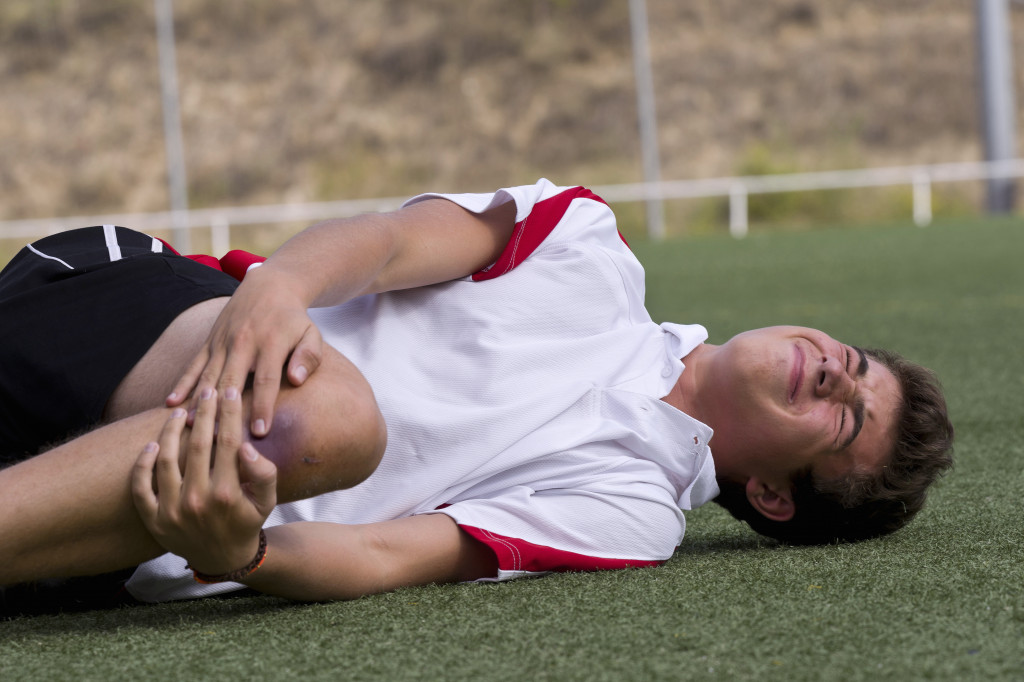• Understand the injury to create an appropriate treatment plan.
• Treatments such as RICE, physical therapy exercises, surgery, or other medical procedures may be recommended.
• Home healthcare services such as wound care, physical therapy, and occupational therapy may also be beneficial.
• Most importantly, follow your doctor’s advice regarding treatment plans and rest periods to ensure a safe recovery.
Sports injuries can be frustrating, painful, and downright discouraging. For athletes of all levels, they are a reality that must be addressed. No matter your skill level or experience, you need to learn how to safely move forward with the healing process and get back in the game. Here’s a look at some strategies for overcoming sports injuries.
Understand Your Injury
The first step in recovering from any sports injury is to understand exactly what kind of injury you have, as different types of injuries require varied treatments. For example, an ankle sprain will be treated differently than an ACL tear.
Knowing your injury will help you focus on the right things during your recovery process so that you can return safely and effectively without further injuring yourself or prolonging the recovery process unnecessarily.
Moreover, understanding your injury involves consulting medical professionals such as a doctor or physical therapist. They can help you know the specific injury, provide detailed advice on treatment options, and perform an examination to ensure that there are no underlying causes of the injury that could complicate recovery.

Have A Treatment Plan
A treatment plan tailored to your individual needs will help you manage the injury and address any potential problems. Your doctor or physical therapist can help you create an appropriate treatment plan that includes either of the following:
Rest, Ice, Compression, and Elevation (the RICE method)
This is a standard treatment for injuries such as ankle sprains and knee ligament strains. These treatments involve letting the injured area rest, applying cold packs or ice on it for the swelling, using compression bandages for more support, and elevating the area above your heart level to further reduce swelling and pain.
Physical Therapy Exercises
Physical therapy exercises are an essential part of recovering from any sports injury and can help to strengthen the surrounding muscles, reduce stiffness and pain in the area, improve flexibility, and restore mobility. Your physical therapist will design a specific program based on your needs and tailored to your particular injury. They may include stretching exercises, strengthening exercises, range-of-motion exercises, and other activities such as pool therapy or aquatic exercises.
Surgery or Other Medical Procedures
Sometimes, your doctor may recommend additional medical treatment such as surgery or other procedures. Surgery can be used to repair damaged ligaments, tendons, and muscles. In contrast, other treatments, such as steroid injections, may also be used to help reduce pain and inflammation in the injured area.
Medications and Supplements
Over-the-counter medications such as ibuprofen and acetaminophen can help to reduce pain and inflammation. In some cases, your doctor may also prescribe stronger medications or recommend supplements such as glucosamine or chondroitin sulfate to support healthy joints.
Home Health Care
In some cases, quality home health care can be beneficial for athletes recovering from sports injuries. This type of healthcare provides professional medical treatments in the comfort of your home, which can help make recovery easier and more convenient. Home healthcare services may include wound care, physical therapy, occupational therapy, and other specialized services that are tailored to your needs.

Follow Your Doctor’s Advice
Once you know what type of injury you have and the recommended treatment plan, it’s important to follow your doctor’s advice—even if it means laying off physical activity for a while.
You may be tempted to push through the pain or engage in activities too early, but this could lead to further damage and longer-term issues. In fact, studies have shown that athletes who do not adequately rest and heal after an injury are at a higher risk of re-injury or developing chronic pain.
Don’t rush your recovery. Instead, follow your doctor’s advice and give yourself plenty of time to heal properly before returning to full activity.
Sports injuries are a fact of life for athletes of all levels—but they don’t have to derail your progress indefinitely. Ensuring a safe recovery from any sports injury requires understanding precisely what kind of injury you have (and how severe it is), having a treatment plan, and following your doctor’s advice regarding treatment plans and rest periods. With proper care and attention throughout each step of this process, you can recover safely from any sports-related injury so that you can get back into action quickly.
